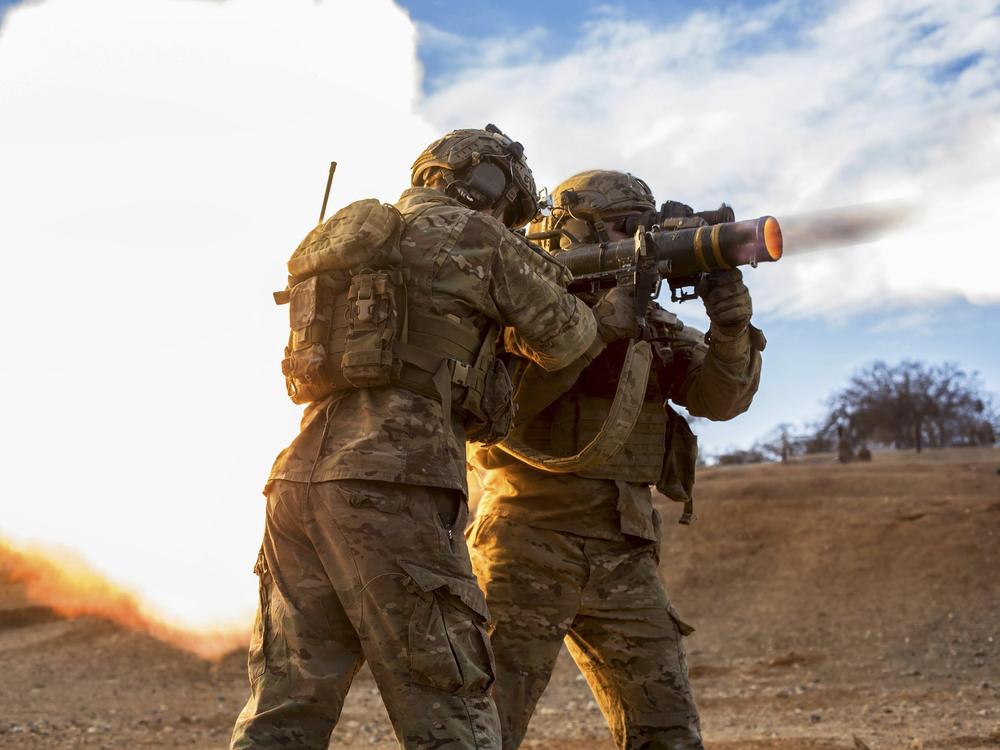Section Branding
Header Content
Blasts from military weapons may injure the brain through its blood vessels
Primary Content
When military personnel fire certain powerful weapons, they are exposed to a blast wave that sends blood surging from the body to the brain.
This "tsunami in the body" is one way a blast can injure blood vessels that supply oxygen and nutrients to structures deep in the brain, says Dr. Ibolja Cernak, an expert on blast injuries at Belmont University in Nashville.
"We are talking about the brainstem, we are talking about the cerebellum," Cernak says, "all of the very nicely cushioned brain structures."'
In animals, there is now strong evidence that these structures can be damaged by blast exposures that disrupt blood vessels. In veterans, the effects are harder to measure.
Imaging studies done by the military have found that "blood flow is affected in people who have a career history with blast exposure," says Stephen Ahlers of the Naval Medical Research Command.
Those studies also suggest a decrease in brain volume, an increase in brain inflammation and disrupted connections between neurons.
"There are these long lasting cumulative effects," Ahlers says.
From blast to blood to brain
A blast isn't just like a blow to the head, when it comes to brain injury.
A head impact tends to injure structures near the surface. A blast wave keeps going.
The result can be impaired blood flow to an area like the brain stem, which controls breathing, heart rate, and blood pressure.
"It could be the veteran comes [to the doctor] because of uncontrolled blood pressure," Cernak says. What a doctor may miss, she says, is that "the problem is in the brain stem."
In addition to the surge of blood through the brain, a blast wave tends to cause injury as it crosses from one type of tissue to the next.
"So on the boundaries of the blood vessel and the brain, we will have shearing and potentially structural damage," Cernak says.
When the blast wave is from a big explosion, like a bomb, this can cause catastrophic bleeding. But repeated exposure to what the military calls low- level blasts, including those from rocket and missile launchers, seems to cause more subtle changes to blood vessels.
One especially vulnerable structure is the blood brain barrier, a protective layer of cells lining the inner surface of blood vessels. These cells form a membrane that usually keeps toxins out of the brain while allowing oxygen and nutrients to get in.
But animal studies show that exposure to repeated blast waves impairs this system.
"The blood brain barrier starts to be leaky," Cernak says,
That leaky barrier makes the brain more susceptible to infections and less able to remove waste products. It also leads to inflammation, which can disrupt connections in the brain.
A compromised barrier reduces the flow of oxygen and nutrients to neurons, the cells that allow movement and thinking.
"The neurons are now starving," Cernak says. "So we are ending up with neural cell death."
Blast: A brief history
The military got interested in low-level blast exposure about a decade ago.
Thousands of roadside bombs in Iraq and Afghanistan had shown that a large blast could cause a concussion or worse without leaving any visible injury. So Ahlers and other researchers began to wonder about smaller explosions.
They did a study of military breachers, specialists who use explosives to remove obstacles or gain access to a secured building. The study involved participants in a two-week breacher training program.
A battery of tests found no impact on the brains of students in the program, Ahlers says.
"But we had five instructors that we just sort of decided to throw into the study," he says. "They were the ones that showed some psychological effects," including memory problems.
The result led to a series of studies on low-level blast in both animals and military personnel.
At first, researchers focused on harm to neurons. More recent studies have added other targets, including blood vessels.
The research has shown that repeated exposure to low level blasts can cause many of the same brain changes seen with high-level blasts. It's still not clear, though, how much blast exposure, or overpressure, is a problem.
"We have tended to focus on the biggest weapons systems, the shoulder-fired weapons where they're very close to your head and the ones that have the most overpressure," Ahlers says. "But we're not quite sure what the thresholds are."
At some point, though, blast exposure begins to affect what's known as the neurovascular unit, a complex system that makes sure brain cells are getting enough blood.
One of Ahlers' own studies looked at a protective layer of proteins in the lining of blood vessels.
"After exposure to blast overpressure it's basically stripped off," he says. "It takes about a month for it to grow back."
Other changes may be permanent. For example, repeated blast exposure impairs the smooth muscle cells that allow blood vessels to regulate blood pressure and flow.
"You may not be able to tell the differences in blood flow under normal conditions," Ahlers says, "but when you stimulate, you see that the smooth muscles have changed how they contract."
The muscle cells contract with less force.
Researchers are just beginning to understand the many ways low level blast waves affect blood vessels. There are already hints, though, that the changes can be profound and permanent.
A 2023 study in rats, for example, found that blast exposure could cause an arteriovenous malformation, an abnormal of tangle of veins and arteries that can cause fatal bleeding.

